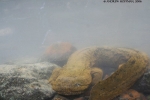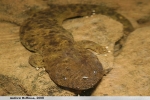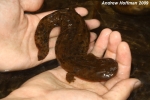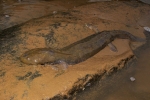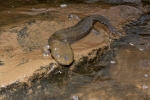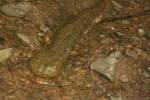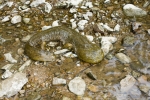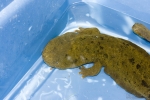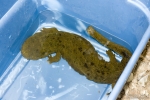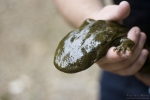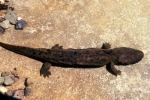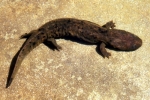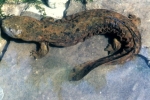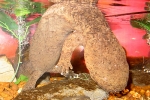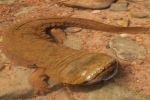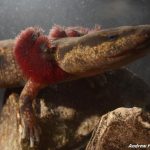Eastern Hellbender
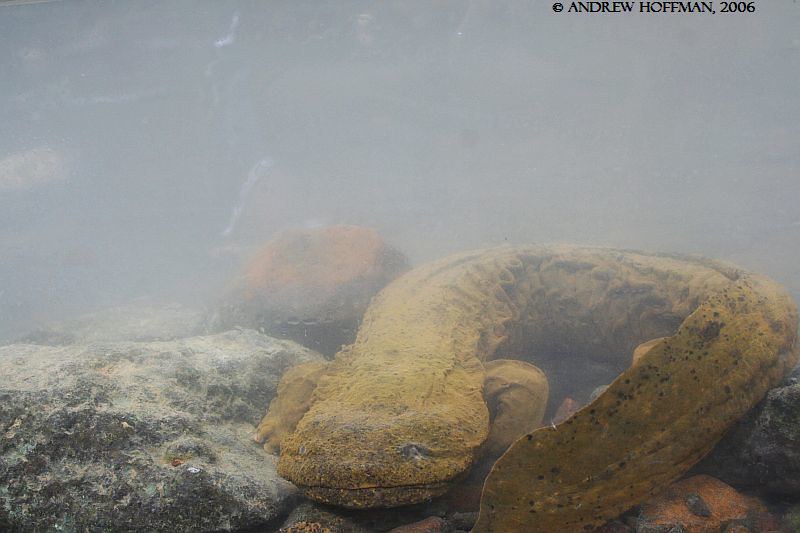
Scientific Name: Cryptobranchus alleganiensis
Size: 9-16 inches (24-40 cm) in length
Status: Species of special concern
PAHERP Resource: Monsters in the Water
Habitat:
Cold fast-flowing medium-sized streams and large rivers with gravel or sandy bottoms and large rocks.
Description:
Very large and stout species. The background is yellowish brown, greenish brown, blackish brown or slate grey with irregular dark blotches. The underside color is similar to the dorsal background. The body and head are strongly compressed dorsolaterally. The neck and sides of the body have wrinkled folds of skin.
- The dorsal background is yellowish brown, greenish brown, blackish brown or slate grey with irregular dark blotches.
- The ventral color is similar to the dorsal background.
- Large and stout species.
- The body and head are strongly compressed dorsolaterally.
- The neck and sides of the body have wrinkled folds of skin.
- The tail is laterally compressed with a well-developed dorsal caudal fin that is located on the back just behind the hind legs.
- The legs have posterior projecting folds of skin and are short and squat.
- The fingers an toes are thick and blunt.
- The head is large and set off from the body by a slightly distinct neck.
- The eyes are small, lack lids and are located on top of the head.
- The chin is extremely wrinkled with a well developed gular fold.
- The gill slits are locate on the side of the head.
- Individuals have maculations on the tail and limbs.
- One month old larvae have a uniformed dark dorsal and white ventral.
- Six month old larvae begins to develop dark spots and slightly pigmented ventral.
- One to Two year old larvae begins to develop dorsal spots and blotches.
- Mature larvae – The dorsal and lateral surface and appendages have dark maculations.
- Mature larvae – The ventral is slightly lighter than the dorsum.
- Larvae have well-developed external gills.
- The dorsal is uniformed in color.
- The yolk sac is present.
- Lacks functional limbs.


References:
- Hulse, C. and McCoy C. J. and Ellen Censky ,1998. Amphibians and Reptiles of Pennsylvania and the Northeast. 39-43pp.
- Petranka, James W. ,1998. Salamanders of the United States and Canada. 140-144pp.
- Tom Diez
- Rex Everett
- Wayne Fidler
- Andrew Hoffman
- Don Becker (psychoticnature.com)
- Stephen Staedtler
Heads up!
Please contribute your observation of this and other herps to the Pennsylvania Amphibian and Reptile Survey. Your help is needed.
